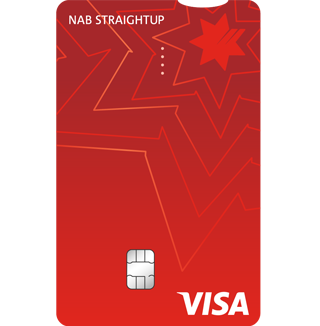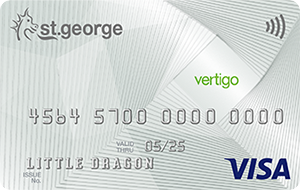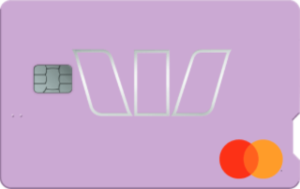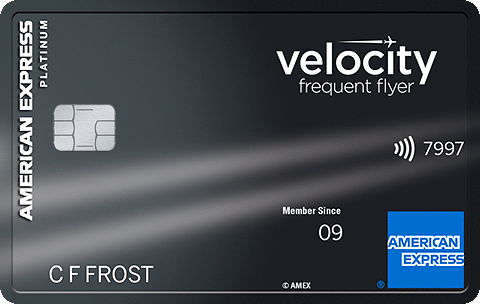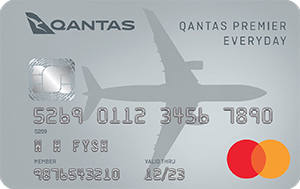
Hi, I’m a personal finance expert who loves to help you out! I’ll answer your question within a business day. Pinky swear.

Since 2020 we’ve seen a number of interest-free credit cards hit the market in direct competition to Buy now pay later services. NAB launched its Straight Up card, CommBank announced its interest-free Neo card, and Westpac added its own Flex card to the mix. But, how do these cards stack up against the likes of Afterpay, ZipPay and Humm?
NAB StraightUp Card
No Annual Fee
Pay no interest or late payment fees – just a simple monthly fee.
How do interest free credit cards work?
Most credit cards charge an annual or monthly fee (unless it’s a card with no annual fee at all). As well, an interest charge is added to any purchases you make on the card. Interest rates can range from 12% to 30%.
Moving away from this traditional format, NAB’s StraightUp card and CommBank’s Neo card instead charge a flat monthly fee that varies according to the cardholder’s credit limit.
With NAB’s StraightUp card, monthly fees are $10 for cardholders with a $1,000 credit limit, $20 for cardholders with a $2,000 credit limit, and $30 for cardholders with a $3,000 credit limit. Meanwhile, CommBank Neo’s monthly fees are $15 on a $1,000 credit limit, $20 on a $2,000 credit limit, and $30 on a $3,000 credit limit.
Neither card has late fees, either. With the StraightUp card, minimum repayment amounts depend on cardholder credit limits, so those who have a credit limit of $1,000 must pay a minimum of $35 a month, those with a credit limit of $2,000 must pay a minimum of $75 a month, and those with a credit limit of $3,000 must pay a minimum of $110 a month.
Over at CommBank, Neo cardholders must pay a minimum monthly repayment of $25 or 2% of the balance, whichever is greater.
Similar to some BNPL providers, both cards work on a ‘no use, no pay’ basis. That means, each month cardholders don’t use their card, they will pay no monthly fee – as long as their balance is also at zero.
Another standout feature is waived foreign currency fees. Both the StraightUp card and the Neo card don’t charge a fee on transactions made in a foreign currency, helping cardholders save money when travelling overseas or shopping online with international retailers.

Could It Work For You?
To determine whether or not these two interest free credit cards are as good as they sound, we need to look at who they might work well for. Yes, they are aimed at the younger market who tend towards BNPL, but that doesn’t mean they will suit the needs of every user – both within that market and out of it.
Both cards charge a monthly fee dependent on credit limit, with no fee charged during months the card is not in use and the balance is at zero. Cardholders who only use the card for large purchases – and pay off that spending quickly – may get good value from the card. On the other hand, those who use the card every month could face a substantial amount in monthly fees. If you had a $3,000 credit limit on the Neo card and used it every month, your total fees would come to $264.
For that reason, the card may work well for cardholders who like to keep a credit card for emergencies. For those users, the card is there when they need it, allowing them access to credit for unexpected expenses. When the card is not in use and the balance is at zero, it costs them nothing.
With credit limits set at $1,000, $2,000 and $3,000, these cards may also suit those who are new to credit, or those who want to limit their opportunity to get into debt. Traditional credit cards can offer credit limits into tens of thousands of dollars – dependent on cardholder circumstances – which could tempt some cardholders to spend more than they would otherwise.
There can also be a certain amount of unpredictability when dealing with traditional credit cards, with minimum repayments set at a percentage of the closing balance. NAB’s StraightUp card aims to address this, by putting in place a set minimum payment determined by the cardholder’s credit limit.
While the bank encourages cardholders to pay as much as they can each month, it says its card takes the uncertainty out of repayments. “A lot of young customers don’t have credit cards because they don’t like the unpredictability of them,” said NAB’s group executive for personal banking, Rachel Slade.
“This addresses the things that make them cautious. Customers want certainty and predictability of repayment. It’s got no surprises.”

Breaking It Down
One of the best ways to work out whether one of these interest free credit cards would work for you would be to think about how you might use it – and then calculate how much you would pay out on an interest free credit card, compared to a traditional credit card or BNPL.
Example 1
Zoe has a $1,000 credit limit on her CommBank Neo card. She uses the card to pay for a $100 pair of jeans, and then makes the minimum repayment of $25 each month for four months to pay off that purchase. Paying $15 per month in monthly fees means she has paid back $160 on that purchase.
If Zoe had a CommBank Low Fee credit card with purchase rate of 20.99% p.a. and an monthly fee of $3, paying off $25 per month would result in her paying out around $5 in interest, plus card’s monthly fee, at about $12. This brings the total repaid to $117.
Using Afterpay, Zoe would have to pay off that $100 purchase in six weeks, rather than four months ($25 at the time of purchase, then $25 fortnightly). However, doing so would mean paying no interest and no fees (as long as she made each repayment on time). The total repaid in this case is $100, but over a shorter period of time.

Example 2
Samira has a $1,000 credit limit on her NAB StraightUp card. She buys a TV for $1,000 and pays it off over six months at $167 per month (plus $10 per month in fees). Samira pays $1,060 in total for this purchase.
If Samira used a CommBank Low Fee credit card, paying off $180 per month to clear the debt within six months, she would pay approximately $57 in interest, plus 6 months fee at around $18. This would bring the total to $1075.
Using Zip, Samira would pay $167 per month to pay off her $1,000 purchase within six months. She would pay no interest, but would pay $6 per month in fees. This creates a total of $1,036.
Example 3
Graham uses his CommBank Neo card to cover a $3,000 lounge set, and then pays $250 per month to pay off the purchase in 12 months. He pays $264 in monthly fees, to pay back a total of $3,264.
Using a CommBank Low Fee credit card, Graham would pay $280 per month to clear his debt in 12 months. During that time, he would pay approximately $328 in interest, and $29 in annual fees, bringing his total to $3,357.
If Graham opted for a CommBank Low Rate credit card, with a purchase rate of 13.24% p.a. and an annual fee of $59, he would pay approximately $211 in interest, bringing the total repaid to $3,270.
Using Zip Money, Graham would pay $280 per month to pay off his $3,000 purchase in 12 months. With the first three months interest free, Graham would pay approximately $169 in interest over the remaining nine months. He would pay $72 in monthly fees, bringing the total to $3,241.
Cost Conclusion
Of course, while each example offers a pretty obvious winner in terms of cost, there are other variables and conditions to take into account, such as additional spending and how much each user could potentially afford to pay back each month.
For that reason, it’s a good idea to do your own calculations that take into account your spending and repayment habits when working out which option is not only the most cost effective, but the most suitable for your needs.
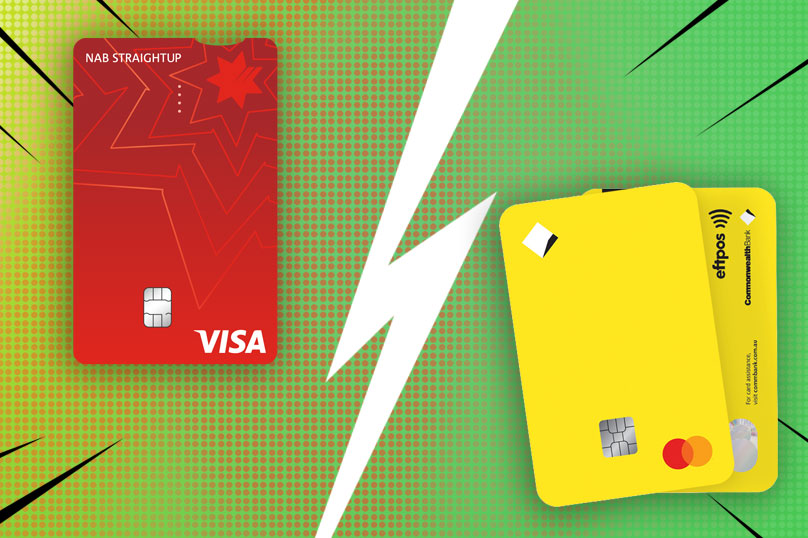
NAB’s StraightUp vs. CommBank’s Neo
So then, you’re considering applying for an interest free credit card. Which one should you choose? Let’s compare the two options to see how they measure up.
Monthly Fees
While both cards charge flat monthly fees according to the user’s credit limit, CommBank’s monthly fees are lower. Choosing the Neo card, you would pay $15 per month in fees on a $1,000 credit limit, $20 on a $2,000 credit limit, and $25 on a $3,000 credit limit. With the NAB StraightUp Card , your monthly fees would be $10 on a $1,000 credit limit, $20 on a $2,000 credit limit, and $30 on a $3,000 credit limit.
No Use, No Pay
Both cards have a no use, no pay feature, which means you pay no monthly fees each month you don’t use the card and your balance remains at zero.
Other Costs
Neither card charges interest, late fees or foreign currency fees.
Repayments
CommBank’s Neo requires a minimum monthly repayment of $25 or 2% of the closing balance, whichever is greater. With the StraightUp card, you would have a minimum monthly repayment of $35 a month on a credit limit of $1,000, $75 on a credit limit of $2,000, and $110 on a credit limit of $3,000, essentially encouraging you to pay off your debt faster.
Rewards
Neither card allows users to earn traditional rewards on a points-based program. However, CommBank’s Neo provides eligible users access to CommBank Rewards, which offers cashback of up to $15 when spending at around 80+ approved retailers. (To be eligible, customers must be older than 21, not be in hardship, and not have default on another CBA product.)
Other Features
Neither card allows balance transfers or cash advance transactions.
Credit Limits
Both cards have set credit limits at $1,000, $2,000 and $3,000.

Interest Free Cards vs. Standard Credit Cards
How does that compare to traditional credit cards? Creating a comparison between these new interest free credit cards and traditional credit cards is somewhat tricky, as there are so many different types of credit card out there. This, of course, is one of the most appealing aspects of the traditional credit card: if you want a credit card, you can generally find one to suit your needs.
With that being said, we can still look at the main costs and features associated with both options to see how they stack up when placed alongside one another.
Ongoing Fees
With a traditional credit card, you could pay anything between $0 and $700+ in annual fees. This annual fee typically correlates with the features on offer, so if you want more, you should expect to pay more. Depending on your needs, you could pay nothing in annual fees, or hundreds – with the aim being you enjoy more in value from the features on offer than you pay out in annual fees. With an interest free card, you pay a flat monthly fee, with no fancy extras on offer – but with the opportunity to pay $0 each month you don’t use your card and your balance is zero.
Interest
Interest on traditional credit cards ranges from around 9% p.a. to 22% p.a. Interest free credit cards charge no interest. However, it’s worth weighing up whether the cost of interest plus fees on a traditional credit card would be higher or lower than the monthly fee on an interest free credit card according to how you use it.
Incidental Fees
Traditional credit cards comes with a variety of incidental fees, which you may or may not have to face. Most charge late fees and foreign currency fees, while the interest free credit cards do not.
Repayments
When using a traditional credit card, you will usually be expected to pay either a flat minimum repayment – usually around $25 – or a percentage of your closing balance. This typically ranges between 2-3%. NAB’s StraightUp card has a set minimum repayment based on your credit limit, while CommBank’s Neo requires the greater of $25 or 2% of the balance.
Rewards
If you want to earn rewards, there are plenty of traditional rewards credit cards to choose from, offering a wide range of rewards programs. Interest free credit cards do not allow for this type of rewards earning, but the CommBank Neo does offer limited cashback when spending at participating retailers.
Other Features
Traditional credit cards can be as feature-packed as you want them to be. On higher end cards, you can enjoy extras such as airport lounge access, hotel upgrades, complimentary insurance covers and travel credit. While you will pay more in annual fees for these cards, if you pay off your balance each month – and make good use of the extras – that extra cost can be worth paying. Interest free credit cards don’t offer any extras of this kind.
Credit Limits
For those who meet card provider eligibility criteria, traditional credit cards can offer credit limits in the tens – and even hundreds – of thousands. Credit limits on interest free cards are limited to $1,000, $2,000 and $3,000.
How you use the card will obviously affect its worth – as well as how much it costs you. To give you an idea of what we’re talking about, look at the following table comparing the cost of paying off various balances over a 12 month period. (Calculations are based on equal monthly repayments, taking into account monthly fees or interest charges as specified.)
| Credit Card Balance | Monthly Fee | Total Paid in Fees | Effective Rate | Compared to Interest on a $0 Annual Fee Card with a 15.45% p.a. Rate | Difference |
|---|---|---|---|---|---|
| $1,000 | $10 | $120 | 21.46% | $86 | $34 |
| $2,000 | $15 | $180 | 16.22% | $171 | $9 |
| $3,000 | $20 | $240 | 14.45% | $257 | -$17 |
Interest Free Cards vs. BNPL
When trying to compare interest free cards with BNPL offerings, things become even trickier, as there is such a wide variety in the market. While most BNPL platforms don’t charge interest, some do, as is the case with Zip Money. Some require repayment over a specified – typically shorter – timeframe, and some charge ongoing fees, while others do not. Credit limits can also vary.
In terms of features and rewards, these are similar to what’s on offer with NAB’s StraightUp card and CommBank’s Neo card, although Afterpay is currently allowing users to earn Qantas Points in limited quantities.
If you want to compare interest free cards – or even traditional credit cards – to BNPL options, you typically need to have a certain scenario in mind.
It is worth pointing out, however, that when you apply for an interest free card, you will need to meet the card provider’s eligibility criteria. BNPL, not so much. On the other hand, you can use an interest free credit card to build your credit score by using it responsibly, which can help you to get approved for more serious credit in the future, such as a home loan.
Why would banks introduce interest-free cards?
The Buy now pay later space surged in the first years of the 2020s, and its popularity caused credit card applications to decline. So, banks created their own products to compete in the same interest-free space.
For example, during the four months to July 2020, the total decline in credit card balances accruing interest was $5.7 billion. This is in stark contrast to the eight months prior to that (August 2019 to March 2020), which only saw a reduction of $2.3 billion. Other reports suggest much of Australians’ superannuation early release money was used to help clear that debt.
As for the number of transactions made using credit cards, these also declined significantly, falling from around 258 million in February to 238 million in July, with the value of those transactions decreasing from $28.7 billion to $24.2 billion during the same period.
Unsurprisingly, the number of credit cards in operation also saw a downward trend, presumably as cardholders either paid off their cards and closed them, or chose to cancel them in favour of other payment options. In July, there were 130,524 fewer credit card accounts than the previous month, and 1.75 million less than in July 2019.
In June the same year, Afterpay boasted 9.9 million customers, after seeing a 116% increase year-on-year. This included 5.6 million customers in the United States and 1 million customers in the United Kingdom, with remaining customers in the more mature Australian and New Zealand markets.
As Afterpay’s biggest Australian competitor, Zip also enjoyed significant growth, reporting a 63% increase over the same period, bringing its total to 2.1 million customers. Meanwhile, newer player Splitit, which allows customers to split payments into interest free monthly installments on existing credit or debit cards, reported a 85% increase, bringing its total to 309,000 users.
With that in mind then, it’s easy to see why two of Australia’s biggest banks decided to branch out, creating what could perhaps be described as a hybrid between a traditional credit card and BNPL. In this hybrid, you would expect its creators to have combined the best of both options, to allow it to appeal to a market that seems to have grown tired of traditional payment solutions.
The question is, has either StraightUp or Neo managed that – and do these cards have something better to offer than what has come before?
Other helpful links
Want a more in-depth look at credit cards vs. BNPL? Check out our post. Or, if you want to know how to BNPL with your credit card, this post will tell you everything you need to know.
Disclaimer: The information contained within this post is general in nature and does not take into account your personal situation. You should consider whether the information is appropriate to your needs, and where appropriate, seek professional advice from a financial adviser.
Photo source: Getty images, Pexels

Pauline Hatch
Pauline is a personal finance expert at CreditCard.com.au, with 9 years in money, budgeting and property reporting under her belt. Pauline is passionate about seeing Aussies win by making their money – and their credit cards – work smarter, harder and bigger.
You might be interested in

Credit Card Types
Credit Card Fraud Statistics

Tips & Guides
Complete Guide to the Velocity Frequent Flyer Program
Recently Asked Questions
Something you need to know about this card? Ask our credit card expert a question.
Ask a question
Hi, I’m a personal finance expert who loves to help you out! I’ll answer your question within a business day. Pinky swear.

